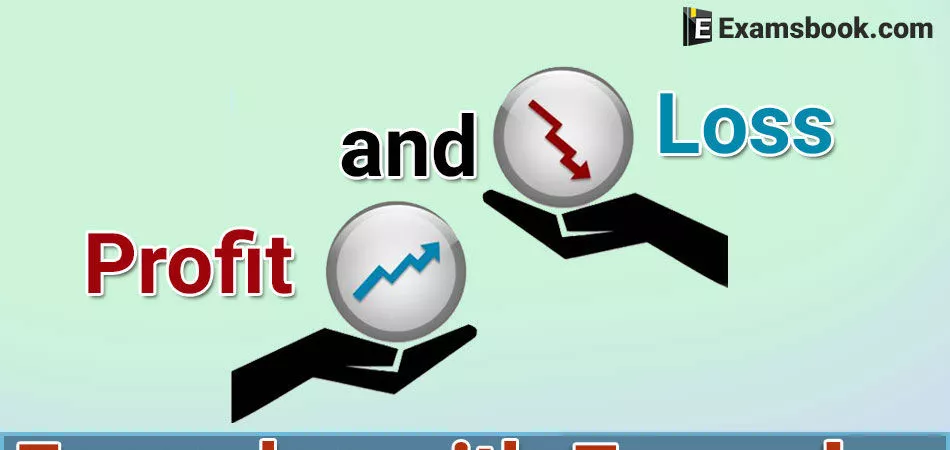


Students who are recently passed senior secondary memorize the profit and loss formulas with examples for SSC and Bank exams. Often students make mistake to use profit and loss formulas. If you preparing for competitive exams, you should understand properly how to use profit and loss formulas.
Here in this blog, you can learn easily how to use profit and loss formulas correctly with examples in your competitive exams. You can learn solutions of profit and loss problems also.
Cost Price (CP)
The money paid by the shopkeeper to the manufacture or money paid by the customer to the shopkeeper is called the cost price (CP) of the goods
* If an article is purchased for some amount and there are some additional expenses on transportation, labor, commission etc. these are to be added in the cost price. Such expenses are called overhead expenses.
Selling Price (SP)
The price at which the shopkeeper sells the goods is called the selling price (SP).
Profit or Gain
Whenever a person sells an article at price greater than the cost price, he is said to have made a profit or gain.
Profit or Gain = SP – CP [SP > CP]
Loss
If the selling price of an article is less than its cost price, then the shopkeeper suffers a loss.
Loss =CP – SP [CP>SP]
1. If a person sells two similar articles, one at a gain of a% and another at a loss of a%, then the seller always incurs a loss which is given by
Example.1. A man sold two radios for Rs. 2000 each. On one he gains 16% and on the other, he loses 16%. Find his gain or loss percent in the whole transaction.
Solution:
According to the formula
2. If a dishonest trader professes to sell his item at CP but uses false weight, then
Example.2.A dishonest dealer professes to sell his good at cost price but he uses a weight of 930 g for a kg weight. Find his gain percent.
Solution:
According to the formula
3. If cost price of a articles is equal to the selling price of b articles, then
Example.3. If the cost price of 20 articles is equal to the selling price of 18 articles, find the profit per cent.
Solution:
Given that , a = 20, b = 18
According to the formula
4. A tradesman mark his good at a% above the cost price and give purchases at discount of b% for cash then there is
Example.4. A tradesman marks his good at 20% above the cost price and allows purchases a discount of 10% for cash. What profit percent does he make?
Solution:
Given that, a= 20% b=10%
According to the formula,
Required answer =
Here, (+)ve sign shows that there is a profit.
5. A business sells his items at a profit of a%. If he had sold it for R more, he would have gained b%. Then,
Example.5.A person sold a table at a profit of
Solution
Here, a =
According to the formula
For more Profit and loss questions and answers, Visit next page.
Get the Examsbook Prep App Today